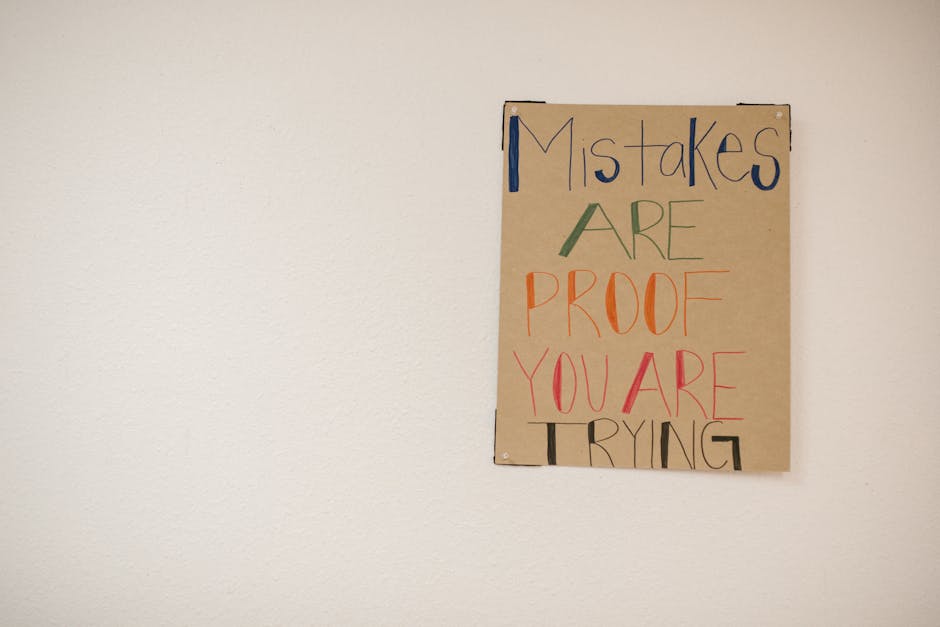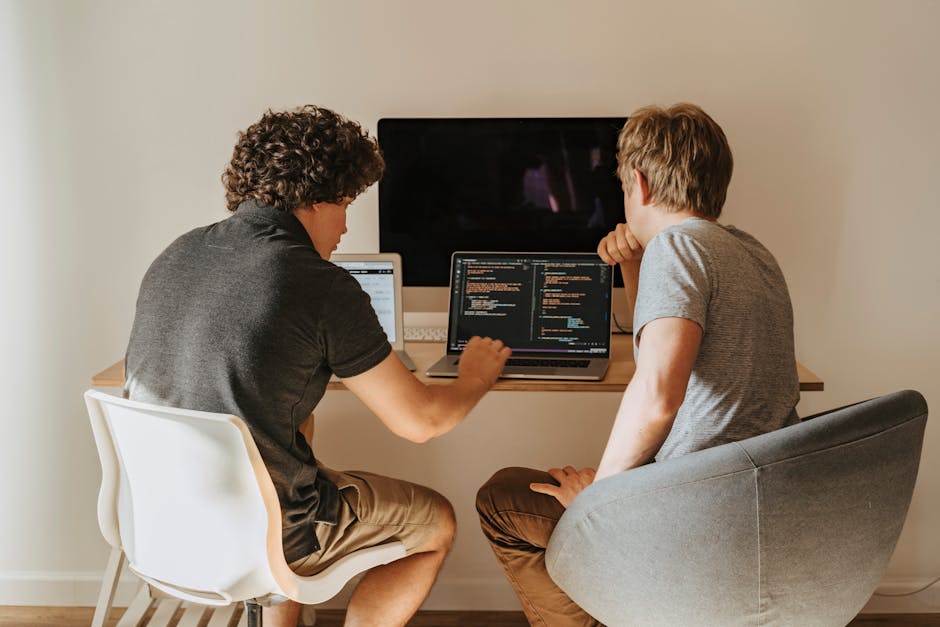Mindful Coding: Boost Your Creativity in Online Programming Courses
In the rapidly evolving landscape of education, online programming courses are at the forefront of innovation. Yet, amidst this technological revolution, one aspect often overlooked is the human element—specifically, our mental wellness. Enter "Mindful Coding," a concept that combines mindfulness practices and meditation techniques with traditional programming education. By integrating such practices, educators can significantly enhance learners' focus and creativity, laying the groundwork for a more engaged and effective learning experience.
Imagine this: You’re in an online programming course, your mind buzzing with code snippets, debugging issues, and a looming deadline for an assignment. You feel the pressure mounting, your creativity stifled. Now, picture a different scenario where a simple mindfulness exercise helps you regain focus and sparks innovative solutions. This article will delve into how incorporating mindfulness into online programming education can lead to dramatic improvements in student outcomes, blending technical skills with mental wellness.
The Importance of Mindfulness in Education

The growing acceptance of mindfulness in educational settings underscores its importance. A significant portion of students report feelings of stress and anxiety, which can lead to decreased performance and burnout. Various studies emphasize that mindfulness can help alleviate these pressures by enhancing attention span, promoting emotional regulation, and fostering a richer learning experience.
For instance, according to a meta-analysis published in the journal Mindfulness, integrating mindfulness practices into education can lead to significant improvements in academic stress, emotional wellbeing, and even student behavior. This is particularly relevant for online courses where learners may feel isolated and disconnected.
How Mindfulness Enhances Learning in Programming

When it comes to programming, crystal-clear focus and high levels of creativity are paramount. With its logical and often complex nature, coding can be particularly susceptible to cognitive overload—a state where the brain has too much information to process efficiently. This is where mindfulness can make a substantial difference.
Improved Focus and Concentration

Mindfulness techniques, such as focused breathing or guided visualization, can significantly enhance a learner's ability to concentrate on coding assignments. By teaching students to practice mindfulness before engaging with their programming tasks, educators can buffer against distractions. This practice allows learners to return to their projects with renewed clarity, often resulting in higher-quality code and innovative solutions.
For example, a group of educators who implemented mindfulness sessions before coding classes reported a 30% reduction in distractions, leading to improved programming assignments and higher class participation.
Enhanced Creativity and Problem-Solving Skills

Creativity in coding often arises from the ability to see connections between disparate ideas. Mindfulness promotes cognitive flexibility—an essential trait for successful problem-solving in programming. When students engage in mindfulness exercises, they cultivate a mindset that encourages exploration without the fear of failure.
One can look at the story of a programming educator who shared how a brief meditation session led to unexpected breakthroughs in student coding projects. After a week of dedicated mindfulness practices, students created projects they previously thought were out of reach, resulting in a 50% increase in originality.
Innovative Lesson Designs Integrating Mindfulness

Integrating mindfulness into programming education may seem daunting, yet innovative lesson designs can enable it seamlessly. Here are some strategies that educators can employ:
1. Start with a Mindfulness Warm-Up

Before diving into complex coding tasks, educators can lead a short mindfulness session. This could involve simple breathing exercises or guided imagery that focuses on feelings of calm and creativity. This warm-up signals to students that their mental states are as important as their programming skills.
2. Mindful Breaks During Coding Sessions

Encourage learners to take short mindful breaks during longer coding sessions. These sessions could involve stretching, meditative breathing, or quick mindfulness exercises. By addressing the need for mental pauses, educators help students return to their tasks with improved focus and energy.
3. Collaborative Mindfulness Workshops

To foster community and connection, educators can organize workshops focused on combining coding with mindfulness practices. These sessions could include coding challenges followed by group meditations to reflect on the coding experience. Fostering collaboration enhances peer support, creating a more engaging learning environment.
4. Reflection Journals

Encourage students to maintain reflection journals where, after each session, they jot down moments of clarity, breakthroughs, and feelings of stress. This practice cultivates self-awareness, allowing learners to identify when they feel overwhelmed and need a mindfulness strategy to regain focus.
Personal Stories from Educators

Every successful initiative has its champions, and in the realm of mindful coding, stories from educators who have successfully integrated mindfulness into their curricula are inspiring.
Case Study: A Coding Bootcamp

An educator from a leading coding bootcamp embraced mindfulness after witnessing students struggle with stress. After months of implementing a mindfulness curriculum—including guided meditations, reflections, and mindful breaks—the bootcamp reported an increase in student satisfaction scores. Students expressed feeling more connected with their coding journey, with many noting they were able to embrace challenges with renewed enthusiasm and creativity.
Anecdotes from the Field

Another educator described how after introducing mindfulness practices, students demonstrated a newfound resilience. Instead of succumbing to frustration after encountering bugs, they engaged in quick mindfulness exercises to reset their minds, leading to lower dropout rates and higher completion rates of projects.
Actionable Strategies for Mindful Coding

To foster enhanced focus and creativity in online programming courses, educators can consider these actionable strategies:
1. Leverage Technology

Utilize apps specifically designed for mindfulness, such as Headspace or Calm. These platforms frequently offer guided meditations tailored for students and can be integrated into course materials for daily practice.
2. Mobile Mindfulness Moments

Incorporate mindfulness tips into course platforms like learning management systems (LMS). For example, send reminders for mindfulness techniques as notifications throughout the day, integrating breaks naturally into the learning environment.
3. Build Community Practices
Encourage online discussion forums where students can share their mindfulness journeys and techniques. This inclusivity fosters a sense of camaraderie that can bolster morale, especially in a remote learning context.
Bridging Mental Wellness and Technical Education
Through mindful coding, educational institutions can begin to embrace a holistic approach to learning. This fusion of mental wellness and technical education respects the dual needs of students: the acquisition of robust programming skills and the preservation of mental health in a demanding learning environment.
Programs that focus solely on technical skills risk neglecting an integral part of the learning process. It’s essential to recognize that the best programmers are not just those who can write the most efficient code; they are also the ones who can truly innovate based on creative insights born from a balanced mental state.
The Broader Impact on Society
As educational practices evolve, the implications of this shift toward mindfulness in programming extends beyond individual achievements. By fostering a generation of tech-savvy individuals who are grounded in mindfulness, we may see significant social benefits—more innovative solutions to societal issues, improved workplace environments, and a greater focus on collaboration in tech sectors.
Final Thoughts
Incorporating mindfulness practices into online programming education transcends traditional teaching methods. It allows for a deeper exploration of technical skills while nurturing the mental wellness required for sustained learning and creativity. As educators, our role is to foster environments where both skills and emotional intelligence thrive.
Whether you’re a learner eager to innovate or an educator looking to inspire, consider joining the mindfulness movement in education. Start small—practice mindful breathing before diving into code, or share your reflections with peers. In the end, mindfulness may just be the key to unlocking your full potential in the ever-evolving world of coding.
Explore further strategies to enhance online education through engaging techniques by reading about holographic classrooms and fostering curiosity through Q&A.


